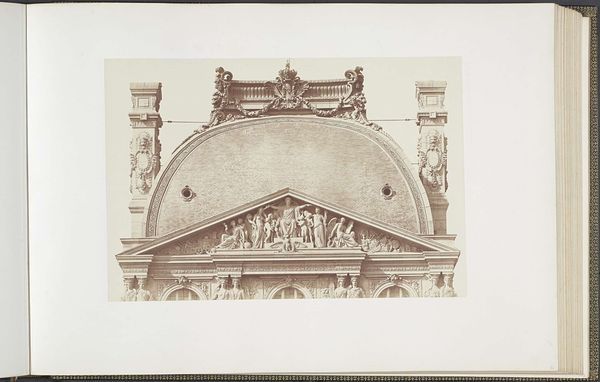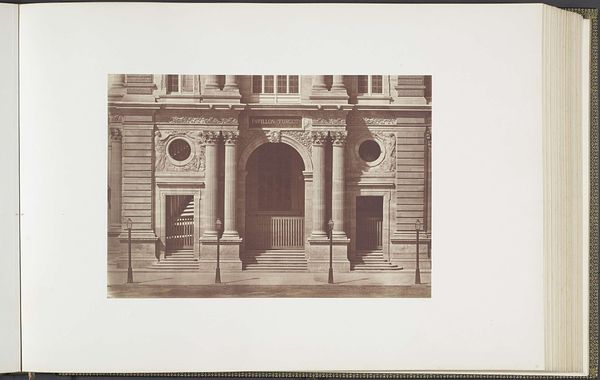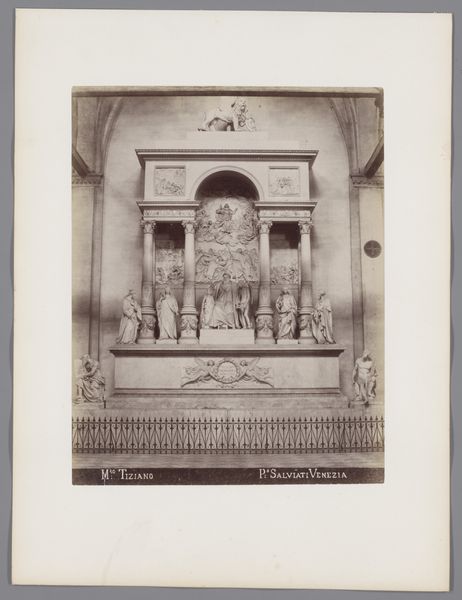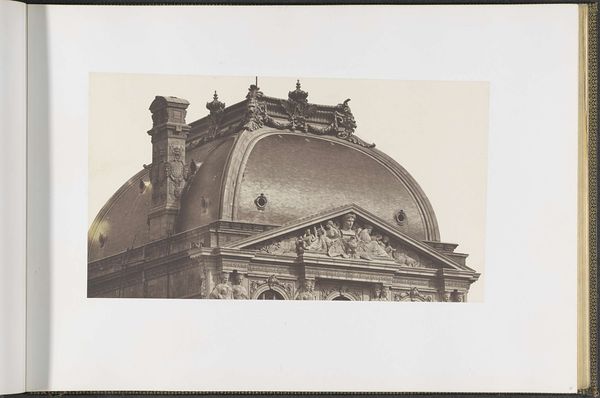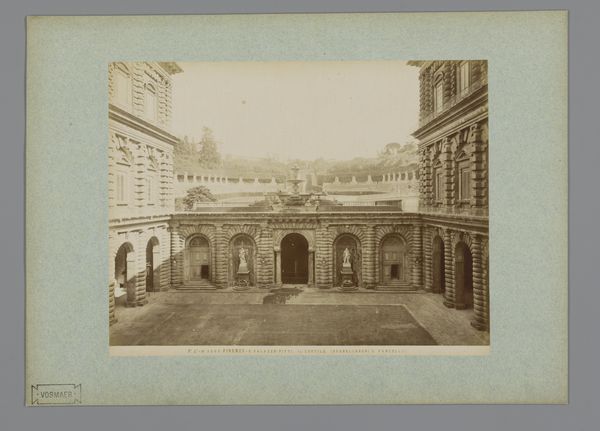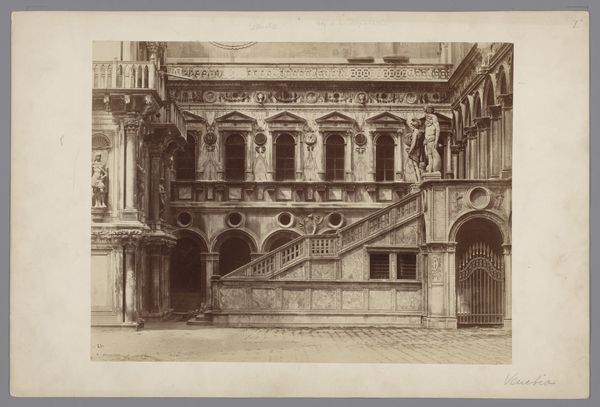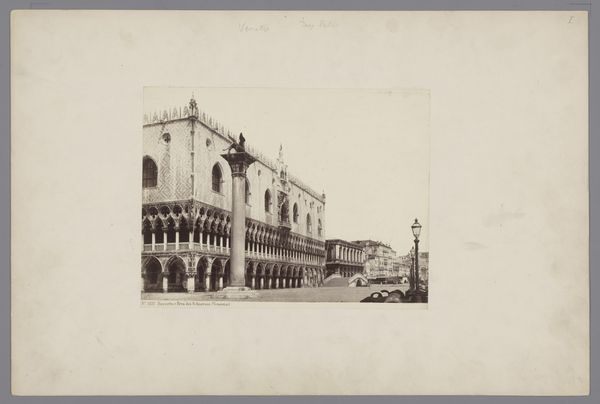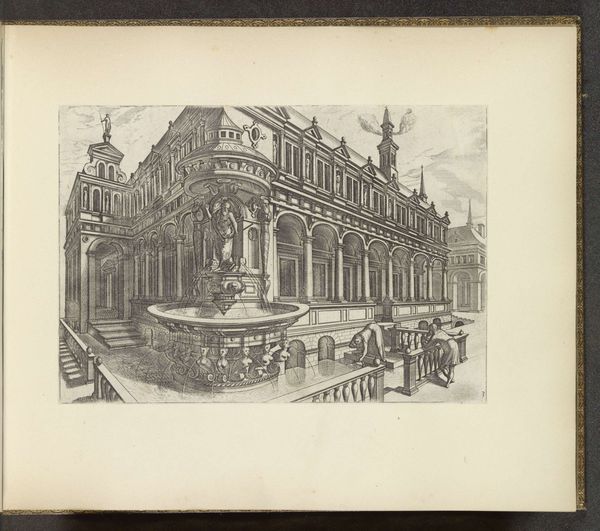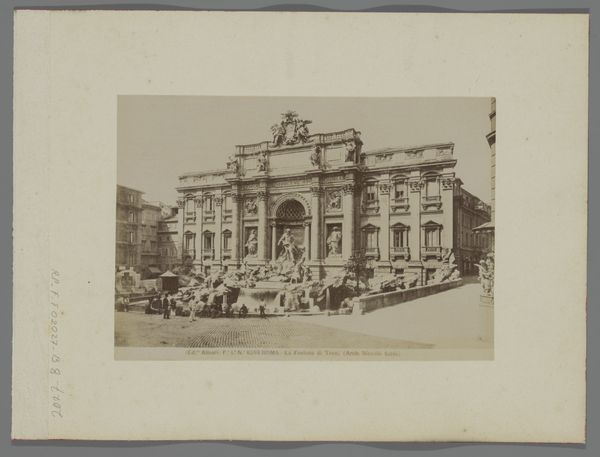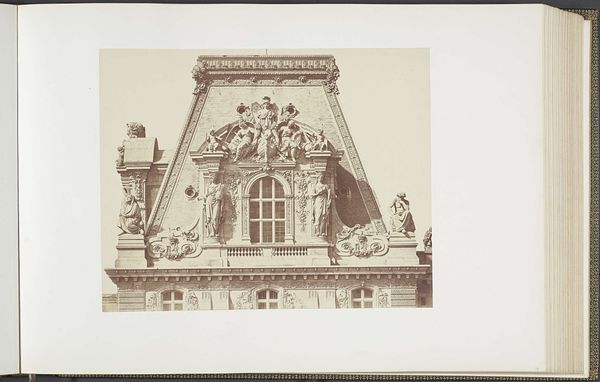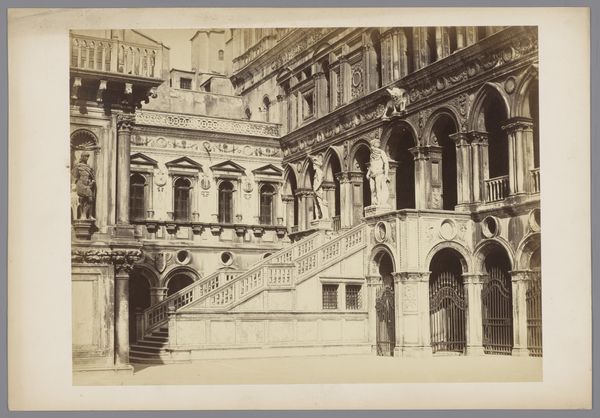
Dak en zolderverdieping van de Bibliothèque Impériale in het Palais du Louvre c. 1857
0:00
0:00
edouardbaldus
Rijksmuseum
print, photography, albumen-print
#
neoclacissism
# print
#
photography
#
cityscape
#
albumen-print
#
building
Dimensions: height 376 mm, width 523 mm
Copyright: Rijks Museum: Open Domain
Editor: This is Edouard Baldus’s "Roof and attic of the Bibliothèque Impériale in the Palais du Louvre," circa 1857, an albumen print. It’s a strangely compelling image, focusing so intensely on just the very top of the building. What strikes me is how it highlights the sheer labor involved in constructing and maintaining such a monumental structure. What do you make of it? Curator: Precisely! Look at the material realities of this photograph. The albumen print itself—the meticulous process of coating paper with egg white, sensitizing it, exposing it… This echoes the manual labor invested in the depicted architecture. Notice how the angle forces us to consider the individual components: each stone, each sculpted figure. This wasn’t magically conjured; it was painstakingly built. Editor: So, you're suggesting Baldus directs our gaze to consider both the literal construction of the building, and the artistic construction of the photograph itself? Curator: Exactly. Consider also the social context. Baldus was commissioned to document these structures, playing a role in visually constructing the narrative of Imperial Paris. Photography here becomes a tool of power, used to legitimize and showcase the empire’s grandeur through meticulous depictions of its materiality. Who benefitted from this meticulous representation, and who might have been exploited to realize it? Editor: It's fascinating how the seemingly simple image prompts us to reflect on broader historical forces. So, seeing it this way shifts my understanding from pure architectural admiration to thinking about labor conditions, the circulation of power and wealth, and even the chemical processes involved. Curator: Indeed. Baldus invites us to unpack the layers of meaning embedded in this ‘simple’ structure. Now, what other ways can you connect those ideas around process, materials and social context?
Comments
No comments
Be the first to comment and join the conversation on the ultimate creative platform.
